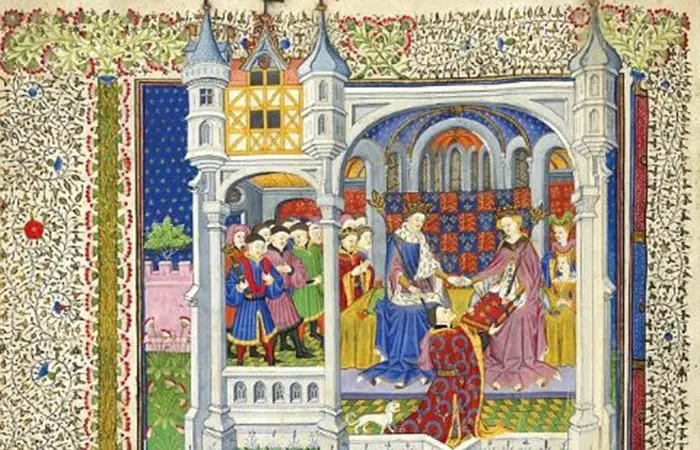Perfect experiences for any occasion
redletterdays.comIrresistable gifts, including short breaks, thrills, attractions, adventure and gifts.

redletterdays.comIrresistable gifts, including short breaks, thrills, attractions, adventure and gifts.

www.booking.comSave up to 40% off UK hotel rooms. The perfect weekend getaway.

my.britevents.com/adsThis ad costs just £0.001 per page. Can you afford NOT to buy this advert?

The British Library's latest exhibition, Royal Manuscripts: The Genius of Illumination, is said to provide 'the most vivid surviving source for understanding royal identity' in the Middle Ages, with many fascinating artefacts never seen before.
Unlocking the secrets of the private lives of the Royal families throughout the middle ages, Royal Manuscripts: The Genius of Illumination is said to be a unique exhibition.
Manuscripts dating back to the 9th century discuss all aspects of a monarch's life, offering advice on how best to rule, covering appropriate regal behaviour, what to eat and even how to cure an upset stomach:
'If you feel a pain or heaviness in your stomach and in your belly then the remedy is to clasp a hot and beautiful maiden or to place upon your belly a wide warm shirt.'
The manuscripts are usually stored in the highest security room in the Library and are considered to be some of the finest examples of royal decorative and figurative painting, with many of the colours as vivid as when they were first painted.
One of the exhibition's highlights is The Shrewsbury Book, dated 1445. The book was presented to Margaret of Anjou upon her marriage to Henry VI by the 1st Earl of Shrewsbury, John Talbot. The images inside the book are designed to present the rightful claim of Henry VI to be the King of France, with Charles VII omitted from the Royal lines, replaced by Henry VI's mother, Catherine of France.
Visitors to the exhibition will also get a rare opportunity to view the 13th-century bestiary, a book of real and imaginary beasts.
An exciting object on loan from the National History Museum found in the Tower of London, a medieval lion's skull, will also be on show.
The exhibition explores how the displayed manuscripts developed the Royal family's knowledge, as well as demonstrating the role of religion in Royal life.
Curator Dr Scot McKendrick commented: The surviving manuscripts associated with successive kings and queens of England form a remarkable inheritance. Together they offer by far the largest body of evidence for the relationship between two critical parts of British cultural heritage: its monarchy and its medieval art.
Parts of the built legacy of the British monarchy, such as Windsor Castle and Westminster Abbey, occupy a very special place in the public consciousness but the royal manuscripts have largely remained hidden from view. The very fact that they have been less accessible has in turn meant that they are fantastically well preserved; their gold still making their pages glow and flicker in the light for us, as they did for those who first viewed them centuries ago.
The exhibition is the culmination of a major research project started three years ago. It is with great pleasure that we are able to share the collection's beauty with a wider audience.
The exhibition starts 11 November at The British Library in London and will be open to the public until 13 March 2012.